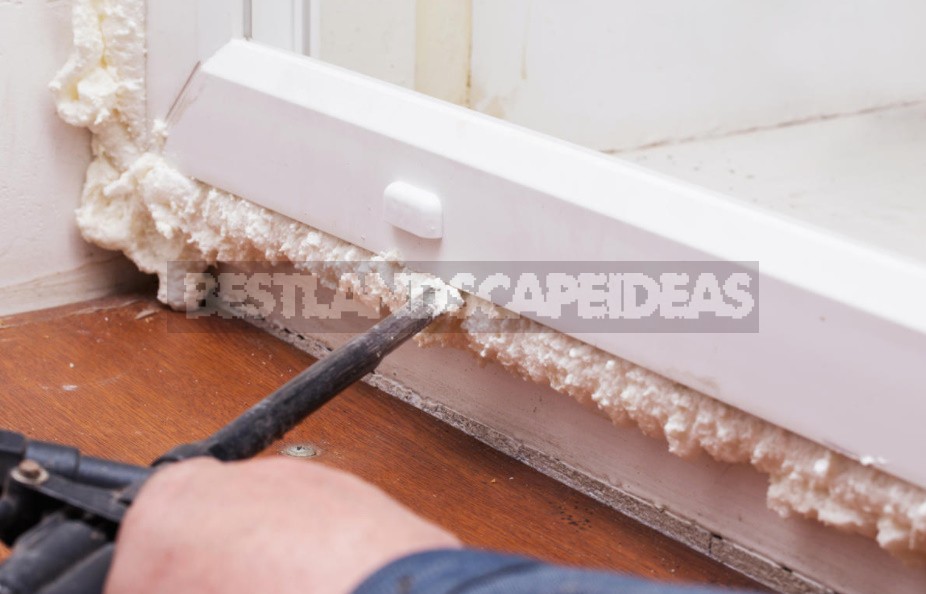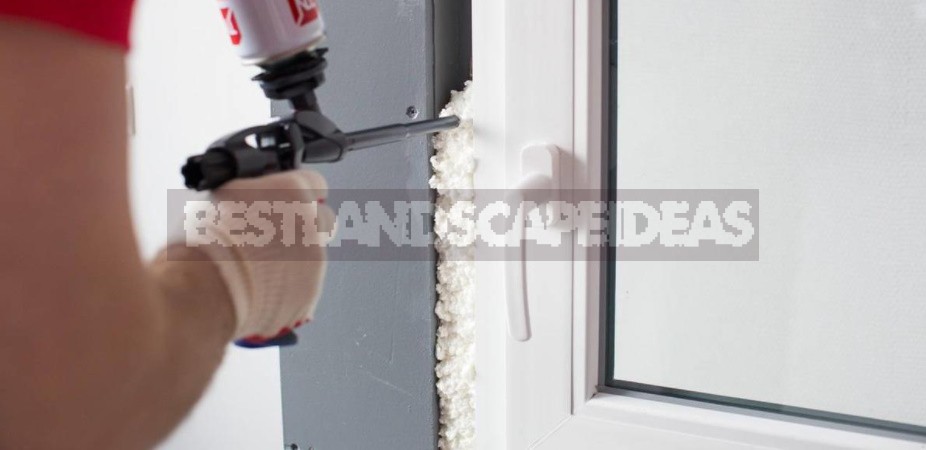
Whether you are doing repairs or are engaged in construction, in any case, you will need mounting foam. With its help, you can effectively insulate structures by treating all seams and joints. It would seem that there is nothing complicated in choosing and using this tool, but is it really so?
Foam composition
Mounting foam is produced by mixing several chemical components. The main ones are isocyanate and polyol-polyesters, for which raw oil is processed. At the moment of diffusion, a chemical reaction occurs between them, resulting in a foaming substance that is well known to builders — polyurethane foam (PUF). It is used as a sealant.
In order for the properties of the foam to meet the needs of consumers, additional elements are introduced into its composition. These are special additives that allow you to withstand low temperatures, as well as increase fire resistance and adhesion.
Thanks to such additions, the sealant can be applied to almost any materials: stone, plastic, wood, metal, concrete. Such a range of applications makes foam a universal tool for eliminating cold bridges.
Single-component foam
In everyday life, the simplest foam is usually used in a 300 ml can, to which a plastic tube is attached. This is a one-component sealant. As already mentioned above, it consists of many substances, but their mixture is in one container and does not require special preparation for work.

The liquefied gases pumped into the can create the necessary pressure, and when the spray head is pressed, the composition bursts out with force. Once in contact with the air, it immediately turns into foam, which instantly expands almost twice. This property allows the PU to hermetically fill even hard-to-reach cavities.
However, it should be understood that the expansion rate depends on the humidity level: if the air is dry, polyurethane is not formed so quickly. This circumstance may affect the quality of the work.
After a few minutes, the foam released from the can hardens, continuing to increase slightly in volume. But it will take at least a day for it to fully harden. After this time, the composition acquires the characteristics of a real polyurethane foam: it does not absorb moisture and retains heat perfectly.
The shelf life of such a sealant is the standard 12 months, which is indicated on the cylinder. Nevertheless, after six months, it begins to lose its properties. Due to the polymerization process, the components become more viscous and it is much more difficult to use such polyurethane. That is why it does not make sense to keep the can unspent until the end for a long time.
Two-component foam
Its main difference is that the main components-isocyanate and polyol-are not in a mixed form in the container, but in two separate chambers. To mix them, you need to turn the shutter located at the bottom several times.
Immediately after this, a chemical reaction will start, so you need to start using the foam as soon as possible. While the components are not mixed, the composition can be stored indefinitely, but after turning the shutter, it is desirable to use up the sealant within 10 minutes. Otherwise, the foam inside the cylinder will harden and it will have to be thrown away.
In the two-component version, the rate of acquisition of the final structure by polyurethane does not depend on humidity: complete curing occurs in 20-30 minutes, and after 10 minutes after the end of work, the excess foam can be cut off with a knife.

In addition, it is not subject to repeated expansion, which occurs after application. The subsequent shrinkage is also not characteristic of it. The sealant, which is already sold in a mixed form, does not have such qualities.
It is advisable to use two-component foam to quickly eliminate a large number of gaps and cracks in doors, windows and other structures. But you can’t do without professional skills in this case. In all other situations, it is better to purchase a regular composition for domestic use.
How to choose a foam and a gun
When buying a sealant, pay attention to the temperature at which it can be used. For external sealing in the cold season, it is better to buy one that is not afraid of frost. Such compositions are used in the range of -10…-30°C. No wonder they are called winter ones.
For work both in winter and in summer, it makes sense to purchase an all-season foam designed for a temperature regime from -10 to +35°C. And for summer installation, a sealant is produced, intended for application only at a plus temperature-up to +35°C.
Another important property is an increase in volume. Builders call this ability the foam output. Usually the volume ranges from 50-60 liters, but for professional tools it can be 65, or even 70 liters. The higher this indicator, the more economically the material will be consumed.
Do not forget to take into account the secondary extension. If the cracks that need to be covered up are not very wide (up to 10 cm), it is advisable to use foam, which will increase by no more than 20-30% during polymerization. At the same time, it is better to leave most of the cavities (about 2/3) empty, otherwise there will be a risk of deformation of the structure.
For insulation and sound insulation of large openings and voids, on the contrary, it is better to take a sealant that has a greater degree of expansion.
The maximum primary and minimum secondary increase in volume is typical for professional-class sealants. It is very easy to distinguish them: they have a special valve for attaching to the gun. In addition, their volume starts from 750 ml.
When choosing a foam gun, make sure that its main working elements (the barrel and valves) are made of metal, and not plastic. In addition, a good tool should be collapsible: in such models, it is easy to replace a worn part. Even better, if the gun has a Teflon coating, which greatly facilitates care. At the same time, if we are talking only about a one-time use in everyday life, it is impractical to purchase professional foam with a gun.
How to apply foam
To make the foam thick and viscous, shake the can several times. If it is a two-component substance, first turn the shutter, and then shake.

Foaming polyurethane is designed for gaps with a width of 2-10 cm. For cracks less than 1 cm, it is better to use a regular silicone sealant or putty.
If you want to work with the gun, carefully attach the can to it: put the container on a hard surface, release the valve, put the tool on top and, turning the cylinder, screw it to the gun. Then turn the screw, pull the trigger and make sure that the foam has gone down the barrel.
Before using a single-component composition, spray the surface on which you plan to apply it with water from a spray gun. In the same way, moisten the foam after application. Thanks to this, the adhesion will improve and the rate of solidification of the PU will increase.
During the sealing process, try to always keep the can upside down, otherwise part of the composition will remain inside and it will not be possible to use it completely.
How to clean the mounting foam from hands and clothes
If necessary, clean the foam from your hands, use a nail polish remover. Acetone will also help, but after it, irritation may remain on the skin. A more environmentally friendly way is to dip your hands in salted water.
To remove foam from clothing, use white spirit or gasoline. And as a washing of the gun, the Penosil cleaner has proven itself well. They can also remove the not yet hardened polyurethane from floor coverings or plastic.
To protect against ultraviolet radiation, it is desirable to paint the seam of frozen foam, unless, of course, it is located in a place inaccessible to sunlight.




Leave a Reply